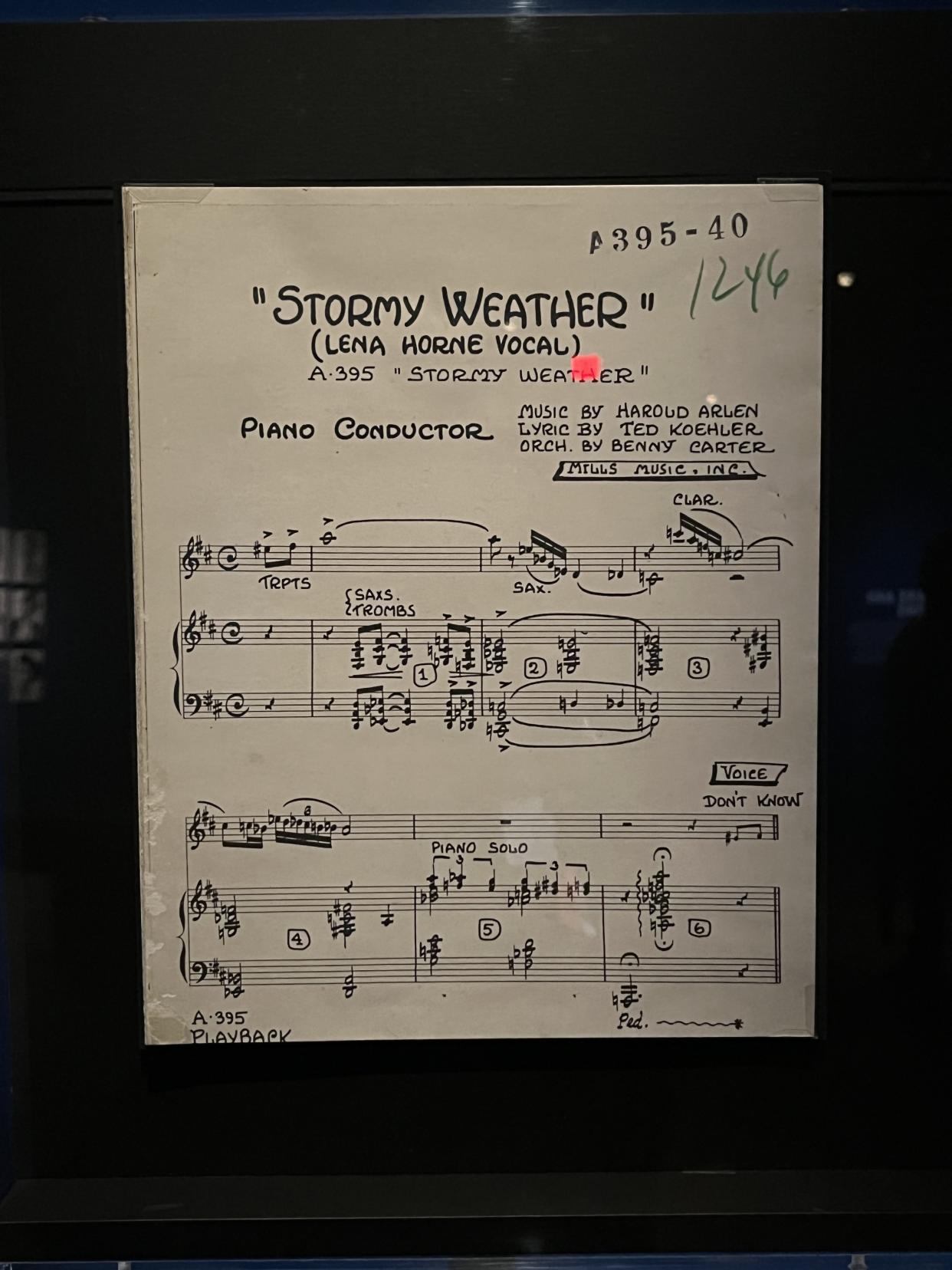Louis Armstrong’s Trumpet, Sammy Davis Jr.’s Suit and More Must-See Pieces at the Academy Museum’s ‘Black Cinema’ Exhibit

The Academy Museum’s Regeneration: Black Cinema 1898-1971 is not to be missed. Not only does the exhibition celebrate Black representation in film, it serves as an important reminder and lesson about the contributions of Black filmmakers and stars to the world of cinema.
Opening Aug. 21, seven galleries make up the exhibit exploring Oscar Micheaux’s low-budget dramas in the silent-film era to the works of Melvin Van Peebles.
More from Variety
The exhibition also introduces audiences to stars largely unknown to mainstream moviegoers — Ralph Cooper, Clarence Brooks and Francine Everett — alongside iconic screen legends Paul Robeson, Josephine Baker, Harry Belafonte, Sidney Poitier and Lena Horne.
Poiter’s Oscar for “Lillies of the Field” is just one of the many artifacts on display in this historic exhibition. Alongside the award are tap shoes worn by the Nicholas Brothers and one of Louis Armstrong’s trumpets.
Cowboy Boots worn by Herb Jeffries in 1937’s ‘Harlem on the Prairie’
Before appearing in westerns such as “The Bronze Buckaroo” and “Harlem Rides the Range,” Herb Jeffries made his acting debut in 1937’s “Harlem on the Prairie.”
Jeffries played Jeff Kincaid and was one of the first Black actors to sing Western music on screen. Billed as “Black America’s first singing cowboy in the movies,” Jeffries could sing, act and ride a horse. “Harlem on the Prairie” was shot at the N. B. Murray Dude Ranch, a Black-owned ranch in Victorville, California.
On display at “Regeneration” are a pair of leather boots worn by Jeffries in the film.
Costume worn by Sammy Davis Jr. in 1959’s ‘Porgy and Bess’
Sammy Davis Jr.’s “Sportin’ Life” suit from “Porgy and Bess” is a vintage original black and white patterned outfit. The tailored jacket with peaked lapel and black velvet upper collar has a matching pair of button-front pants.
Irene Sharaff was the film’s costume designer.
Tap Shoes worn by the Nicholas Brothers
Two pairs of tap shoes worn by Fayard and Harold Nicholas are situated underneath the sheet music for “Stormy Weather.” While the Nicholas Brothers rarely received leading role opportunities due to racial prejudice, the duo still earned international fame through their talent, charisma and iconic routines, especially with their performance in “Stormy Weather” to the tune of “Jumpin’ Jive.”
The brothers, with their background as choreographers and dancers, did not even rehearse for the sequence, which is deemed one of Hollywood’s most impressive dance numbers.
Costume Design Illustrations for 1954’s ‘Carmen Jones’

Costume designer Mary Anne Nyberg created the costumes for 1954’s “Carmen Jones,” the all-Black-cast musical starring Dorothy Dandridge, Harry Belafonte, Pearl Bailey, Dushanbe Carroll and Brock Peters. The exhibition features two design illustrations from the film: the off-the-shoulder black top and red pencil skirt ensemble worn by Dorothy Dandridge as Carmen Jones, as well as the plaid pink dress worn by Olga James as Cindy Lou.
Dandridge earned an Oscar nomination for her role in “Carmen Jones,” making her the first African American woman to be nominated for best actress in a leading role.
Zoot Suits worn by dancers in 1943’s ‘Stormy Weather’
Beside the Nicholas Brothers’ tap shoes at the exhibit are three zoot suits worn by dancers in 1943’s “Stormy Weather.” Cab Calloway sported the infamous oversized zoot suit in the film, which was released during the same year that the Zoot Suit Riots occurred. According to the exhibit, the striped zoot suit costumes were worn by Doris Ake, Nadine Coles, Cleo Herndon, E. Williams, Reeves and an unidentified dancer.
Helen Rose was the film’s costume designer.
Paul Robeson’s version of ‘Ol’ Man River’ from the 1927 musical ‘Show Boat’
A rendition of Paul Robeson’s “Ol’ Man River” from the 1927 musical “Show Boat” plays in one gallery of the exhibit, with Robeson’s version beside the original lyrics. Robeson would occasionally change the lyrics of songs he performed in a musical or film to express his genuine lived reality. A Civil Rights activist, Robeson often counteracted racial stereotypes depicted in film.
In the original “Ol’ Man River,” with music by Jerome Kern and lyrics by Oscar Hammerstein II, the song says: “Git a little drunk / An’ you land in jail / Ah gits weary / An’ sick of tryin’ / Ah’m tired of livin’ / An skeered of dyin’.” Robeson, who sang “Ol’ Man River” in the 1936 film adaptation, changed this portion of song in his own rendition: “You show a little grit and / You lands in jail / But I keeps laffin’ instead of cryin’ / I must keep fightin’ / Until I’m dyin’.”
‘Stormy Weather’ Sheet Music
Along with Lena Horne’s sequined evening gown is the sheet music for “Stormy Weather.” The 1943 musical has been restored for the Academy Museum and will screen on Sept. 3.
The song was written by Harold Arlen and Ted Koehler in 1933 and is performed by Horne’s character, Selina Rogers, towards the end of the film.
Louis Armstrong’s Engraved Selmer B-Flat Trumpet
Jazz extraordinaire Louis Armstrong had a career that spanned five decades. Over the years, he became famous for his trumpet playing as well as his voice.
The trumpet on display is circa 1930s. Armstrong was renowned for playing his trumpets for up to five years before passing them on.
On display is a Henri Selmer B-flat custom-made and inscribed trumpet that belonged to Armstrong.
Best of Variety
From 'The Sandman' to 'Blonde': Books Made Into Movies and TV Series That You Should Read
Jennette McCurdy's Provocative Book 'I'm Glad My Mom Died' Is Already a No. 1 Bestseller
Sign up for Variety’s Newsletter. For the latest news, follow us on Facebook, Twitter, and Instagram.






